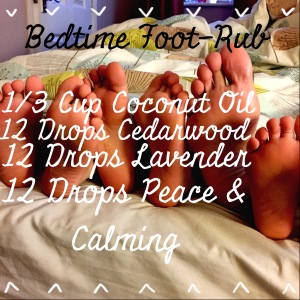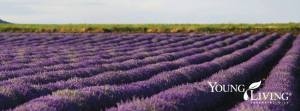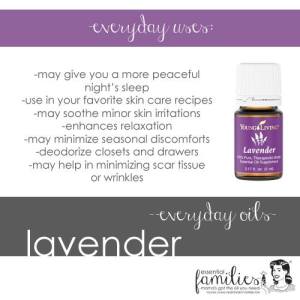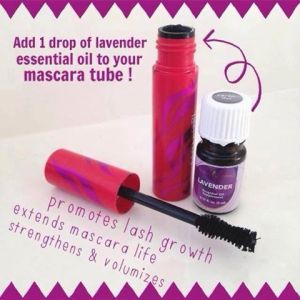Check out this mouthwatering picture of Young Living lavender fields, I'm totally taking advantage of their open farm policy one day!
THE TRUTH ABOUT LAVENDER
An Excerpt from 'French Aromatherapy', written by Jen O'Sullivan
Most people do not have the sensitivity to fragrances that I do, but I trust my sense of smell above anyone or any label telling me a product is pure. My body will tell me much faster than a label—I can tell within seconds if there are synthetic fragrance fillers in the essential oil. I get a major frontal lobe headache within seconds of smelling synthetic fragrances. Lavender is the number one offender on this point. According to the Lavender Growers Association, there is 100 times more pure therapeutic grade Lavender essential oil exported from France each year than is actually grown there, which begs the question, “What exactly are they exporting?” It’s not fully pure essential oil, that’s for sure. It is most likely Lavandin spiked with synthetic linalool.
An interesting quote from an article written by Dr. Ernest Guenther back in the 1950s states, “Oil of lavender, once produced to the extent of 150,000 kilograms annually in France from true lavender, has decreased to about 50,000 kilograms annually, having given way to a 300,000 kilogram production of Lavandin from hybrids of true lavender and spike lavender.” Lavandin is easier to grow and will yield far greater amounts of essential oil per batch, up to 5–6 times more; therefore it’s quite a bit more profitable to grow. What exactly is Lavandin? It’s a hybrid between true Lavender and Spike Lavender, which has three flower spikes per stalk as opposed to only one. The constituents on Lavandin are not the same, nor do they work as therapeutically as the true French or English Lavender.
Often you will see companies clearly state that an oil is Lavandin and not Lavender, however this is sometimes not the case. Lavandin and Lavender have different constituent markers. A simple alteration of Lavandin is achieved by adding synthetic linalool which will bring the constituents to within passable Lavender range. Aura Cacia states, “A label with the word ‘lavender’ doesn’t necessarily mean a product is a high quality true lavender essential oil, or that it will offer the aromatherapy benefits of true lavender. Over the past several years, demand for lavender oil has skyrocketed, creating a supply shortage that has led to mislabeled lavender products making their way into the marketplace. Some common adulteration practices include spiking lavender and leavening oils with synthetic fragrances such as synthetic linalool and linalyl acetate to make it smell more like lavender, or stretching true lavender oil with solvents such as dipropylene glycol.” This is shocking!
D. Gary Young is known to have a love affair with Lavender and is said to be the champion of bringing true French Lavender into production in the United States. He says, “While I was visiting one of the distilleries in France, I watched the synthetic solution being put into the extracted oil that was poured into the barrels. I was very surprised when I saw the export tags on the barrels showing they were going to a new company in Utah. I even took a photo of the tag. I’m sure the people in Utah had no idea what they were getting, which is typical of most buyers.” The sad reality is, unless the company you buy your essential oils from has control over the production of the oils from the seed selection stage through the final bottling stage, it’s impossible to know for certain if you’re getting the real deal. Why, then, would this be an issue? The very reason most of us use essential oils is to eliminate, to the best of our ability, the synthetic chemicals in our life.
There are few Lavender essential oils that do not give me a raging headache. I used to vehemently hate Lavender for that reason alone… that is until I met Young Living’s Lavender. I use it every day and it’s changed my breathing for the better. No other Lavender I’ve tried, to date, even comes close. When Lavender is pure, without any synthetic chemicals, it may smell nice to me, but its potency in therapeutic action is what I want. The smell is a happy afterthought for me. If you are not sensitive to smells, you’ll want to take a look at the other areas that may shed light on your current company to know for sure if they’re a good fit for your needs.
There are several questions you will want to ask the essential oil company that are covered in my books. If you’re using essential oils just to make a room smell pleasant, by all means choose one whose scent you like. If, however, you’re looking for therapeutic value and action, and especially if you’d like to consider consuming an essential oil, these questions are paramount. Do not take this lightly. There’s really no clear standard on essential oils, and terms such as certified, therapeutic, organic, and now even medicinal grade, technically mean nothing. These words are marketing jargon that have no real weight. Most people are figuring that out by now, but if you’re new to the essential oil world, you may not have ever known. So where does that leave you? Confused I bet, which is why I decided to become a louder voice in this beautiful aromatherapy industry.
Cheers!
Cheers!
[Excerpt from the book French Aromatherapy ©2016 Jen O'Sullivan]
Lavender is considered the "Swiss Army Knife" of the oils!
If you are not sure what to use...then use Lavender!
It is gentle enough to put on little ones too.
This oil is pretty amazing.
It has a fresh, sweet, floral aroma that is both soothing and refreshing. Because it is the most versatile of oils no home should be without it.
It is hugely regarded for both skin and beauty.
If you are not sure what to use...then use Lavender!
It is gentle enough to put on little ones too.
This oil is pretty amazing.
It has a fresh, sweet, floral aroma that is both soothing and refreshing. Because it is the most versatile of oils no home should be without it.
It is hugely regarded for both skin and beauty.
Some Uses for Lavender
1. Soothe Minor Skin Irritations - mix 1tbsp of raw coconut oil with 3-5 drops of lavender and apply topically to the area.
2. Ease a Sting or Bite - Apply neat to the area. I always keep lavender in my handbag, just in case!
3. Seasonal Discomforts or Environmental Reactions? - Apply neat to the inside of the cheek, behind the ears and around the rims of the nostrils.
4. Need Peaceful Sleep? - Diffuse before bedtime and try our bedtime foot-rub.

5. Help Soothe Minor Cuts and Bruises - We put 1-2 drops with a drop of carrier oil and rub onto the area to help soothe.
6. Aid Relaxation - Add to epsom salts and dissolve in a warm bath. Lavender is also great for an after bath massage to help relaxation on little and big ones alike. It's so gentle that it would be great for any baby massage too.
7. Super Mascara - Why have normal mascara when you can have SUPER mascara? I love this little tip - not only does it benefit your lashes but can lengthen the life of your mascara too - no more gloop!
You can read more about how not all essential oils are created equal here.
How to get hold of this oil
If you would like to purchase a bottle at wholesale price or would like a free sample please do contact me. Alternatively, please see Wellness Toolkit for the best ways to join Young Living and the amazing Essential Families team with over 5000 members.



No comments:
Post a Comment